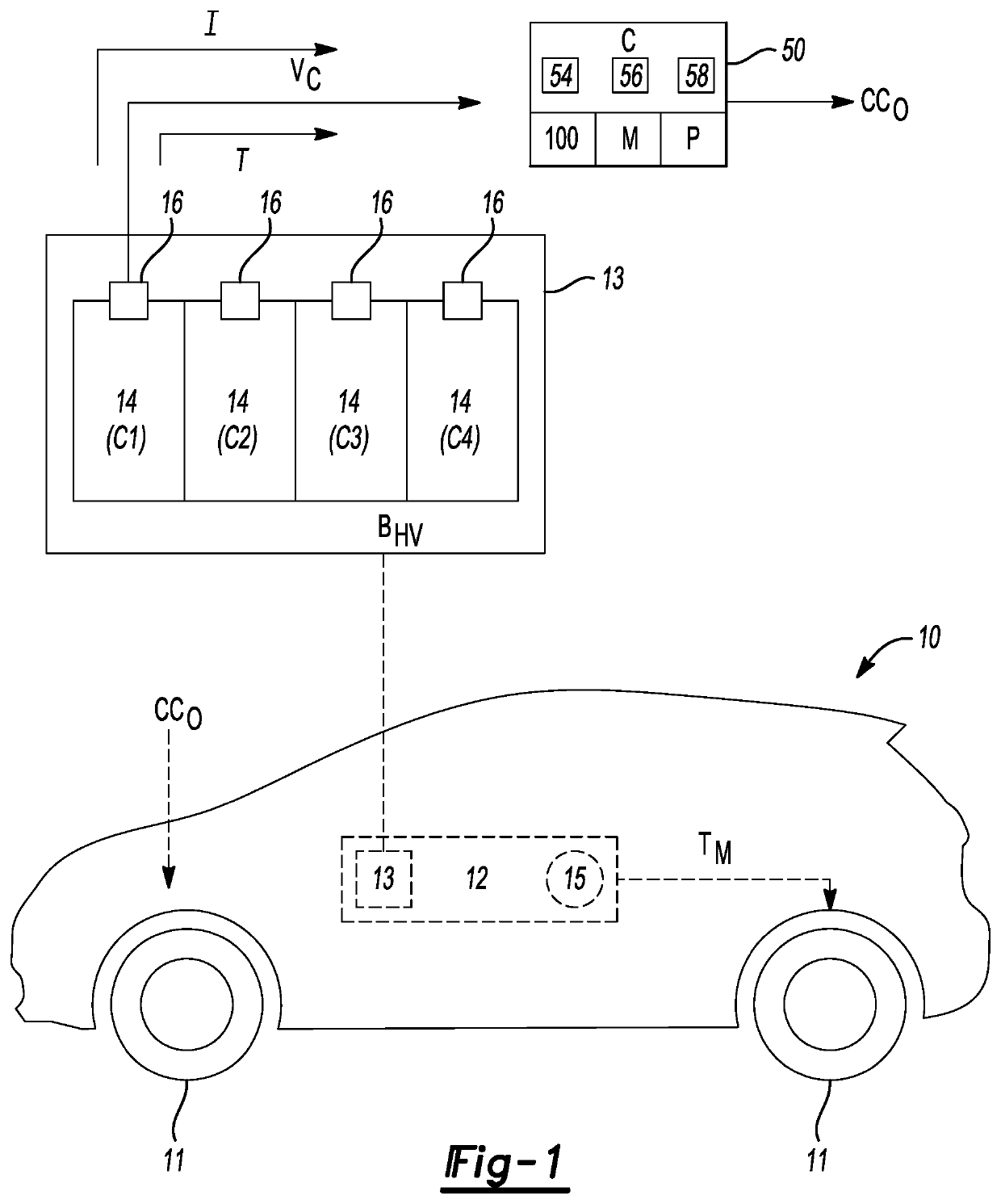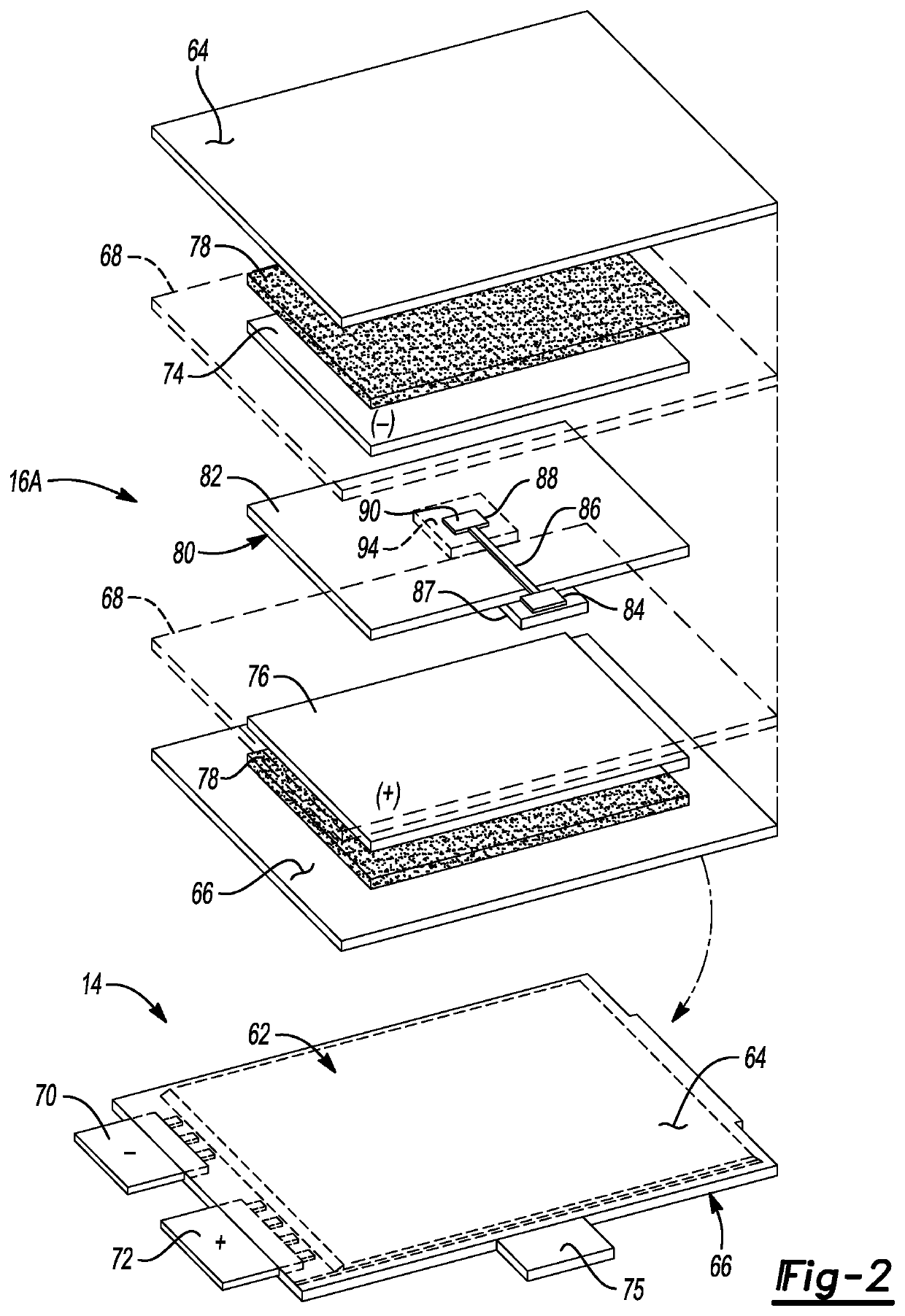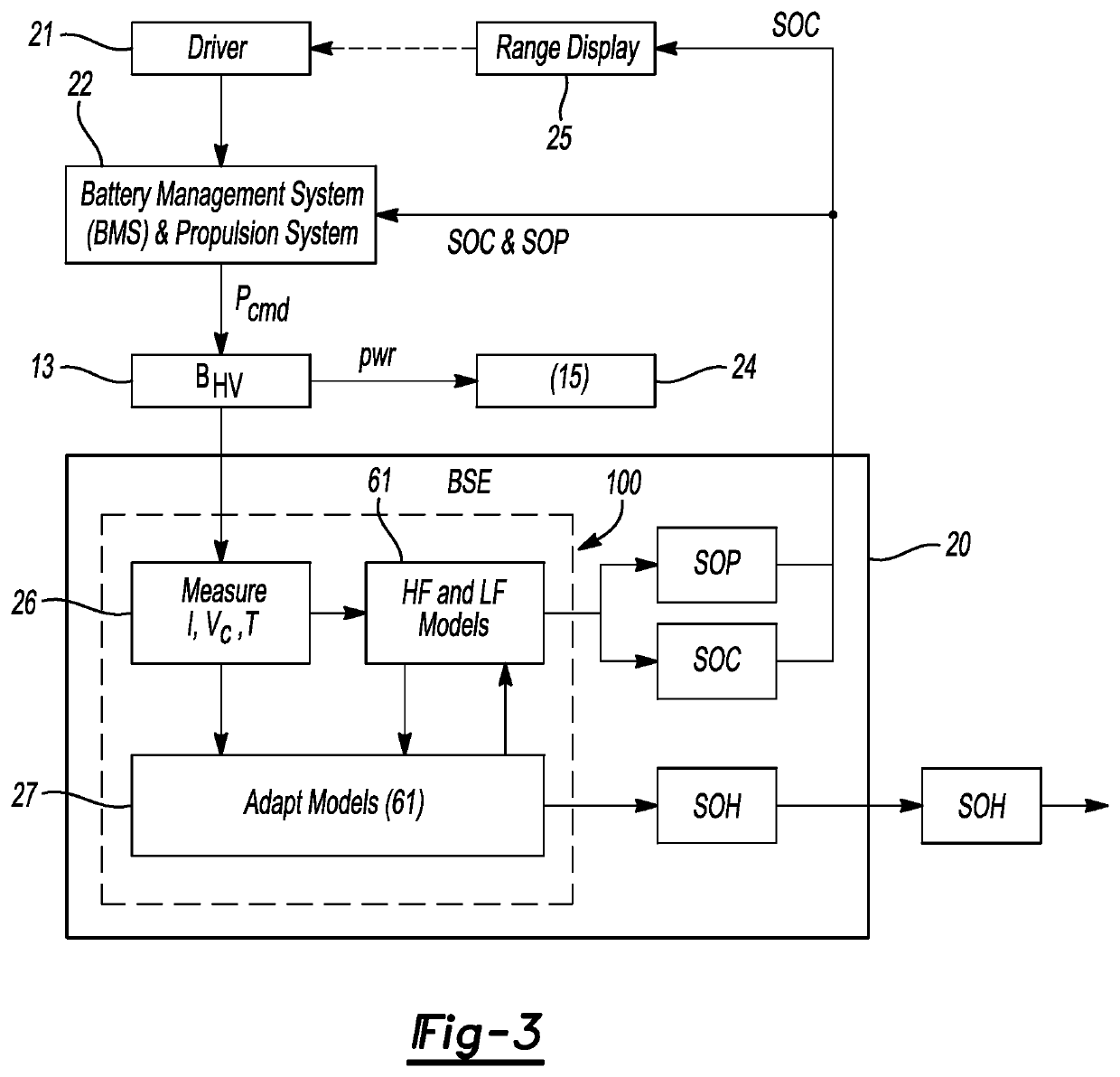Battery state estimation using electrode transient model
a transient model and battery technology, applied in the field of electric systems, can solve the problems of complex determination of the above-mentioned ocv curve and real-time state estimation problem, and the concentration of each species is not necessarily uniform through a given electrode, and achieves the effect of minimal over-current computational burden associated with the present method
- Summary
- Abstract
- Description
- Claims
- Application Information
AI Technical Summary
Benefits of technology
Problems solved by technology
Method used
Image
Examples
Embodiment Construction
[0029]Referring to the drawings, wherein like reference numbers refer to like components, FIG. 1 depicts an example vehicle 10 having a set of drive wheels 11 powered via an electrical system 12. Power flow to or from the electrical system 12 is managed by a controller (C) 50, e.g., a battery system manager or other control device(s), with the controller 50 regulating operation of the electrical system 12 via a set of output signals (arrow CCO). The vehicle 10 may be optionally embodied as a hybrid electric vehicle or a battery electric vehicle in which the electrical system 12 ultimately generates and delivers propulsion torque to the drive wheels 11. While the vehicle 10 is described hereinafter as one example type of high-energy system that may benefit from the present teachings, vehicles may be envisioned other than the illustrated motor vehicle 10, e.g., aircraft, marine vessels, or rail vehicles, as well as stationary or mobile powerplants, platforms, robots, etc., without lim...
PUM
| Property | Measurement | Unit |
|---|---|---|
| thickness | aaaaa | aaaaa |
| porosity | aaaaa | aaaaa |
| electrical | aaaaa | aaaaa |
Abstract
Description
Claims
Application Information
 Login to View More
Login to View More - R&D
- Intellectual Property
- Life Sciences
- Materials
- Tech Scout
- Unparalleled Data Quality
- Higher Quality Content
- 60% Fewer Hallucinations
Browse by: Latest US Patents, China's latest patents, Technical Efficacy Thesaurus, Application Domain, Technology Topic, Popular Technical Reports.
© 2025 PatSnap. All rights reserved.Legal|Privacy policy|Modern Slavery Act Transparency Statement|Sitemap|About US| Contact US: help@patsnap.com



